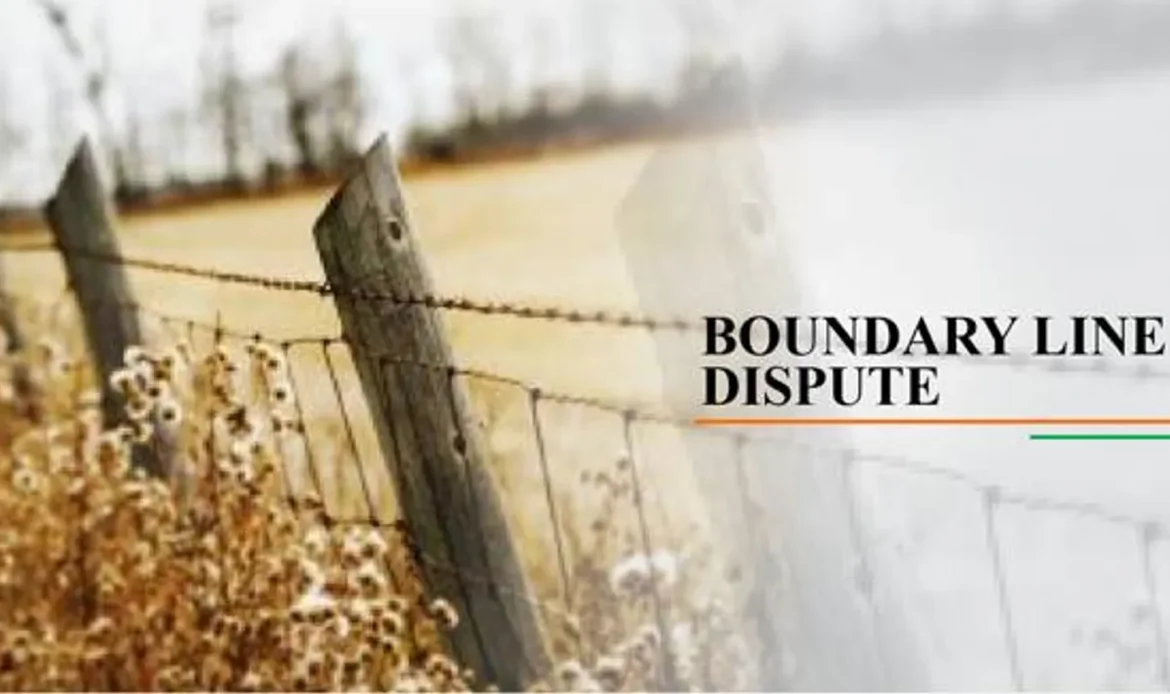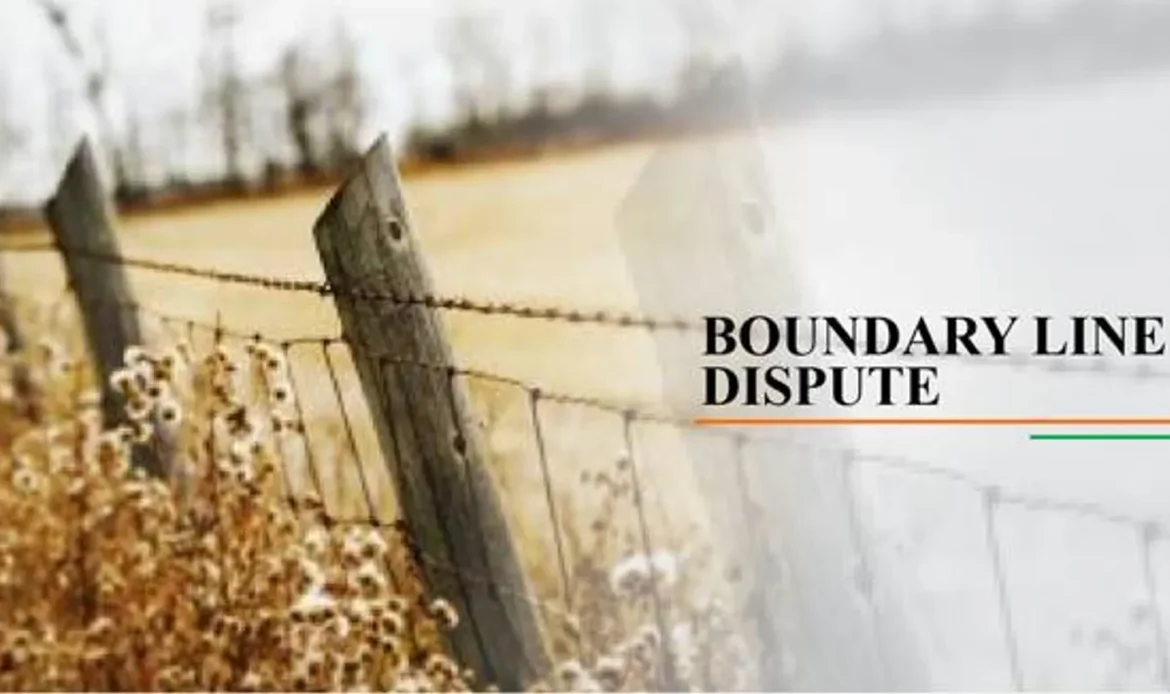
Ultimate Guide to Conquering Boundary Disputes and Encroachments in Nigerian Real Estate
Introduction
Navigating the complexities of real estate in Nigeria can often be challenging, particularly when it comes to boundary disputes and encroachments. With a growing population and rapid urbanization, the frequency of such disputes is on the rise, making it essential for property owners, investors, and real estate professionals to understand how to address these issues effectively. This article explores the nature of boundary disputes and encroachments in Nigerian real estate, providing practical strategies for resolution.
The Nigerian real estate sector has witnessed exponential growth over the past two decades, fueled by rapid urbanization, a burgeoning middle class, and sustained foreign investment. Yet as land values soar and demand for secure property ownership intensifies, boundary disputes and encroachments have become a pervasive challenge, threatening investor confidence and impeding development timelines. Left unchecked, these conflicts can erode asset value, derail projects, and fuel costly litigation.
A strategic, systematic approach to identifying, preventing, and resolving boundary disagreements is therefore essential for developers, property owners, legal practitioners, surveyors, and local authorities alike. By adopting proven methodologies—combining legal rigour, technical precision, and effective stakeholder engagement—stakeholders can safeguard property rights, minimize disputes, and foster a more stable real estate environment across Nigeria’s dynamic landscape.
Boundary disputes typically arise when neighboring landowners disagree over where one parcel ends and another begins. Encroachments occur when structures or activities unlawfully extend into adjacent properties. In Nigeria, vague or overlapping land titles, inadequate surveys, historic land-use practices, and informal transfers compound these issues. Without a clear, mutually recognized boundary line, even well-intentioned neighbors may find themselves at odds.
Over time, minor disagreements—such as the extension of a fence, driveway, or warehouse—can escalate into major legal battles, undermining project viability and tarnishing reputations. Recognizing these risks early on and putting in place robust preventive measures is the first line of defence against protracted, expensive disputes.
Several root causes drive boundary conflicts in the Nigerian context. First, incomplete or inaccurate cadastral records often leave critical gaps. Many survey plans predate modern GIS technology, and legacy documents may lack precise measurements or coordinates. Second, informal land transfers—common in peri-urban and rural areas—may rely on verbal agreements or unsanctioned deeds that fail to conform to statutory registration processes. Third, overlapping rights issued by different authorities (state versus local government versus community leaders) can create legal ambiguities. Finally, rapid subdivision of large estates without independent verification of original survey marks further muddles boundary lines, creating fertile ground for encroachment.
The consequences of unresolved disputes are manifold. Legal costs can quickly absorb development budgets, especially when expert witnesses (licensed surveyors, town planners, valuers) are required. Delays in obtaining building permits, land certificates, or finance approvals can stall construction timelines. Social tensions between neighbors may escalate, jeopardizing community relations and leading to vandalism or threats. In the worst cases, courts may issue injunctions halting all construction, or properties may be declared invalidly acquired, leading to forfeiture. For investors and developers seeking timely returns, these outcomes undermine profitability and can sway market perceptions of risk in Nigeria’s real estate sector.
To navigate this complex terrain, stakeholders must embrace a strategic approach rooted in four pillars: comprehensive due diligence, precise boundary delineation, proactive dispute prevention, and efficient dispute resolution. Each pillar demands close collaboration between legal counsel, licensed surveyors, town planning authorities, and community representatives. Legal counsel must verify title authenticity and chain of ownership; surveyors must employ up-to-date GPS and GIS techniques to validate or re-establish boundary markers; project managers must integrate boundary checks into feasibility studies; and community liaisons must engage local stakeholders to secure buy-in and preempt grievances.
A high-impact due diligence phase begins with a thorough title search at the appropriate Land Registry, supplemented by cross-verification of survey plans held by local governments, communities, and previous owners. During this stage, any discrepancies in parcel identification numbers, plan dates, or bearings should trigger an independent perimeter survey. Incorporating drone technology and geographic information systems (GIS) into field mapping can further enhance accuracy, revealing encroachments that may not be apparent at ground level. Armed with this data, project teams can negotiate boundary adjustments before significant capital outlay, embedding dispute-avoidance clauses into land sale agreements.
Preventive measures extend beyond technical surveys. Clear, written agreements—detailing boundary coordinates, maintenance responsibilities, and future land-use intentions—should be executed between neighbors. Project developers can offer to fence mutual boundaries using durable, tamper-proof markers, and to conduct periodic joint inspections with adjacent landowners. Community engagement sessions, facilitated by respected local leaders, can address historical land-use customs and expectations, transforming potential adversaries into allies. By cultivating transparency and shared understanding, projects not only minimize conflict but also build goodwill that accelerates approvals and eases future expansions.
When disputes nonetheless arise, swift, cost-effective resolution mechanisms are key. Alternative Dispute Resolution (ADR) methods—mediation and arbitration—offer confidentiality, flexibility, and reduced timelines compared to conventional litigation. Mediators with specialised training in land and boundary matters can guide parties toward mutually acceptable solutions, preserving relationships and community harmony. Arbitration, if agreed in advance via a dispute-resolution clause, can produce binding awards enforceable by the courts without the delays typical of trial dockets. Only where ADR fails should litigation be pursued, and then with a well-prepared factual and expert evidentiary record to avoid avoidable adjournments and appeals.
By grounding each phase—due diligence, preventive agreements, technical boundary confirmation, community engagement, and ADR—in a unified strategic framework, stakeholders can transform boundary disputes from unpredictable hazards into manageable contingencies. The following sections will delve deeper into each element, offering practical checklists, case studies from Lagos, Abuja, and Port Harcourt, and templates for legal agreements. Armed with these tools, developers and property owners will be empowered to protect investments, strengthen community ties, and contribute to a more resilient Nigerian real estate industry.
Understanding Boundary Disputes and Encroachments
Boundary disputes arise when two or more parties disagree on the location of property lines. These disagreements can stem from unclear title documents, outdated survey plans, or verbal agreements that have been misinterpreted. Encroachments, on the other hand, occur when one party unlawfully intrudes upon another’s property, whether by constructing a structure, planting trees, or extending land usage beyond established boundaries.
In Nigeria, the absence of comprehensive land registries and varying land tenure systems contribute to the prevalence of these disputes. The complexities surrounding customary land rights can also complicate matters, as ownership may not always be well-documented or formalized.
The Legal Framework Governing Boundary Disputes
Nigerian law provides various mechanisms for resolving boundary disputes and encroachments. The Land Use Act of 1978 governs land tenure in Nigeria, granting state governors authority over land allocation and management. Additionally, local laws and regulations may apply, depending on the state or region.
When disputes arise, property owners can seek resolution through negotiation, mediation, or litigation. The courts in Nigeria have jurisdiction over land disputes, and several legal principles, such as the doctrine of “finders keepers” and the principle of “adverse possession,” may come into play. Understanding these legal frameworks is crucial for effectively addressing boundary disputes.
Steps to Handle Boundary Disputes
1. Gather Documentation
The first step in resolving a boundary dispute is to gather all relevant documentation. This includes title deeds, survey plans, land certificates, and any correspondence related to the property. Clear evidence of ownership and boundaries is vital for substantiating claims and identifying the nature of the dispute.
2. Conduct a Survey
Engaging a professional land surveyor to conduct a new survey can provide clarity on the property’s boundaries. A qualified surveyor will assess the land, measure the boundaries, and produce an updated survey plan. This document can serve as a critical piece of evidence in negotiations or legal proceedings.
3. Initiate Communication
Once you have gathered documentation and completed a survey, it is essential to communicate with the neighboring party. Open and respectful dialogue can often lead to a resolution without the need for legal intervention. Discussing the issue calmly may help both parties understand each other’s perspectives and arrive at a mutually agreeable solution.
4. Explore Mediation
If direct communication fails, consider engaging a mediator. Mediation involves a neutral third party who facilitates discussions between the disputing parties. This approach allows for collaborative problem-solving and can lead to a resolution that satisfies both sides. Mediation is often quicker and less costly than litigation, making it a preferred option in many cases.
5. Legal Action as a Last Resort
If all other methods fail, legal action may be necessary. This involves filing a suit in the appropriate court to resolve the dispute. Engaging a lawyer who specializes in real estate law can provide invaluable assistance during this process. A legal professional can help navigate the complexities of the court system and represent your interests effectively.
Addressing Encroachments
Encroachments can be particularly contentious and require a slightly different approach. If you discover that a neighbor has encroached upon your property, it is crucial to take action promptly to protect your rights.
1. Document the Encroachment
Begin by documenting the encroachment thoroughly. Take photographs, create detailed notes, and gather any relevant evidence that supports your claim. This documentation can be crucial if the matter escalates to legal proceedings.
2. Attempt Amicable Resolution
As with boundary disputes, initiating a conversation with the encroaching party is essential. Discuss the issue calmly and present your evidence. Many encroachments are unintentional, and the neighbor may be willing to rectify the situation without hostility.
3. Serve a Formal Notice
If discussions do not lead to a resolution, consider serving a formal notice of encroachment. This notice should outline the details of the encroachment and request that the neighbor cease the encroaching activity. It’s advisable to send this notice through a legal representative to ensure it carries weight.
4. Seek Legal Remedies
If the encroachment persists despite your efforts, legal action may be warranted. A lawyer can assist in filing a suit for recovery of possession or damages, depending on the circumstances. Courts may order the removal of the encroachment and provide compensation for any losses incurred.
Preventative Measures
Preventing boundary disputes and encroachments is always preferable to resolving them after they arise. Here are some strategies to consider:
1. Proper Documentation
Ensure that all property documents are in order and that you have a clear understanding of your boundaries. Secure title deeds, land surveys, and any other relevant paperwork to establish ownership and demarcation clearly.
2. Regular Surveys
Periodic surveys of your property can help identify any potential encroachments before they become significant issues. Keeping your survey plans up to date can provide valuable insights and serve as a reference in the event of disputes.
3. Clear Communication
Maintain open lines of communication with neighbors. Discussing boundaries and property lines openly can prevent misunderstandings and foster good relationships, making it less likely for disputes to arise.
4. Engage Professionals
When purchasing property, consider hiring professionals such as real estate agents, surveyors, and legal advisors. Their expertise can help you navigate the complexities of property ownership and reduce the risk of disputes.
Conclusion
Handling boundary disputes and encroachments in Nigerian real estate requires a proactive approach grounded in understanding legal frameworks, effective communication, and documentation. By following the outlined steps and seeking resolution through mediation or legal channels when necessary, property owners can protect their rights and interests.
As urbanization continues to reshape Nigeria’s real estate landscape, awareness of these issues will become increasingly important. Building strong relationships with neighbors and maintaining clear documentation can go a long way in preventing disputes. Ultimately, a focus on communication and collaboration will foster a more harmonious environment for property ownership and development in Nigeria.
Boundary disputes and encroachments in Nigerian real estate present persistent challenges that demand a multifaceted, strategic response. Throughout this guide, we have underscored the critical importance of comprehensive due diligence, precise technical surveys, robust legal documentation, proactive community engagement, and efficient dispute-resolution mechanisms. When these elements operate in concert, they create a resilient framework that anticipates and neutralizes conflicts before they escalate, safeguarding both project timelines and reputations. By embracing this holistic approach, stakeholders are better positioned to navigate Nigeria’s complex land tenure system, optimize asset values, and foster long-term development success.
The due diligence phase is the bedrock upon which dispute prevention is built. Rigorous title verification at the Land Registry, cross-checking historic survey plans, and conducting independent perimeter surveys mitigate uncertainties that often underpin boundary disagreements. Integrating modern technologies—drone-based aerial mapping, GPS-enabled boundary marking, and GIS analytics—enhances accuracy, ensuring that project teams and neighboring landowners share a common understanding of property limits. These technical investments yield significant returns by averting costly rework, litigation, and potential project shutdowns.
Legal and contractual safeguards further reinforce the preventive framework. Well-drafted sale agreements and development contracts should specify boundary coordinates, maintenance responsibilities, and protocols for handling future encroachments. Including clear dispute-resolution clauses that prioritize mediation and arbitration channels reduces reliance on protracted court proceedings. By obtaining legal opinions on potential overlapping rights—such as community land claims or competing governmental approvals—developers can preempt latent conflicts and structure transactions that withstand scrutiny.
Technical strategies alone cannot resolve disputes rooted in social dynamics. Engaging adjacent landowners early—through community forums led by trusted local leaders—fosters transparency and builds goodwill. Informal land-use customs, tribal land-holding patterns, and customary rights often underlie encroachment claims. By acknowledging these traditions, convening joint site visits, and negotiating mutually beneficial adjustments (e.g., granting temporary access easements), stakeholders transform potential opponents into project advocates. This inclusive approach not only minimizes the likelihood of conflicts but also accelerates approvals from government agencies and traditional councils.
When disagreements do surface, Alternative Dispute Resolution (ADR) serves as an expedient and cost-effective remedy. Mediation sessions can unearth creative solutions—such as land swaps, shared access roads, or revenue-sharing arrangements—that conventional litigation would never contemplate. Arbitration, once agreed upon in advance, yields binding awards enforceable by the courts without the typical delays of trial dockets and appeals. Reserving litigation for only the most intractable disputes preserves resources and maintains project momentum, while ADR processes reinforce a cooperative spirit among parties.
Record-keeping and compliance are essential to sustaining the strategic framework over time. All survey reports, geospatial data files, title documents, and dispute-resolution outcomes should be catalogued in a central, secure repository. Regular audits—conducted at key project milestones—ensure that boundary markers remain intact and that any minor encroachments are addressed swiftly. Compliance with statutory land-use regulations, town-planning approvals, and environmental impact assessments further shields projects from regulatory interventions that could compound boundary issues.
Ultimately, the adoption of this strategic approach empowers developers, property owners, legal practitioners, and surveyors to navigate Nigeria’s complex real estate landscape with confidence. By systematizing due diligence, technical precision, legal safeguards, community engagement, and ADR, stakeholders mitigate risks, reduce costs, and accelerate project delivery. This framework not only resolves existing boundary disputes and encroachments but also establishes a blueprint for sustainable growth, contributing to a more transparent, equitable, and thriving Nigerian real estate sector.
As Nigeria continues its urban and economic transformation, the capacity to manage boundary disputes and encroachments strategically will distinguish successful projects from stalled ventures. We encourage you to implement the checklists, leverage the templates provided, convene multidisciplinary teams, and commit to transparent communication at every stage. By doing so, you will not only protect individual investments but also uphold the integrity of the real estate industry, fostering an environment in which property rights are respected and development flourishes for all stakeholders.
Contact Us
For premier Understanding Real Estate Law, contact Chaman Law Firm today. Our offices are conveniently located in Lagos, FCT Abuja, Ogun State, and the UK. We are readily available to assist you with your legal needs. Whether you require consultation, representation, or ongoing legal support, Chaman Law Firm is your trusted partner in navigating Real Estate Law and Regulations in Nigeria.
Call us at 08065553671 or email us at info@chamanlawfirm.com to schedule a consultation.
- Property Law
- Real Estate Law
- Land Law
- Dispute Resolution Law
- Tort Law
- Surveying Law
- Environmental Law
- Administrative Law
- Contract Law
- Mediation Law Consumer Protection Law
Chaman Law Firm: Your Trusted Legal Partner in Real Estate Law
By choosing Chaman Law Firm, you are selecting a team of dedicated professionals committed to providing exceptional legal services tailored to your unique needs. Let us be your advocate and guide in the complex world of Real Estate Law, ensuring your interests are protected and your goals are achieved.


